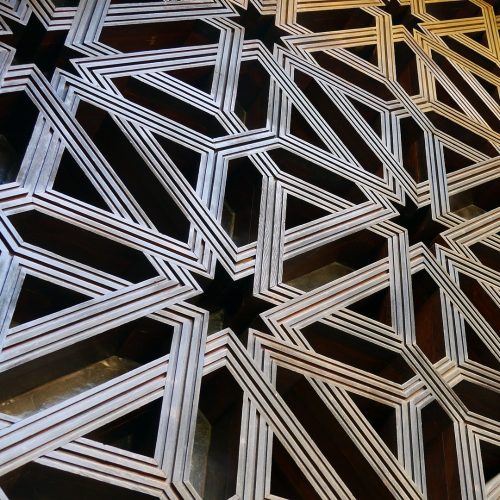
What is Al-Andalus?
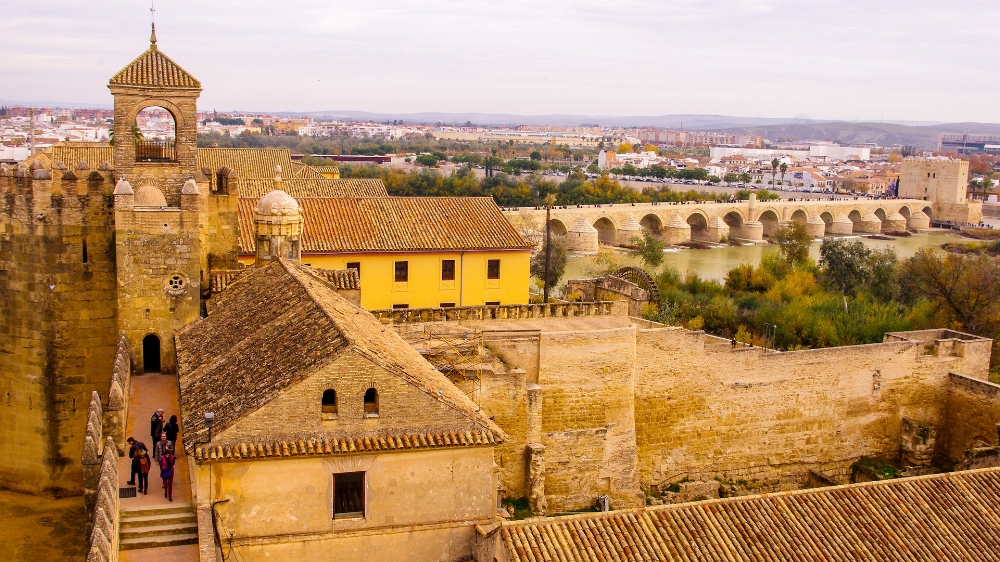 Al-Andalus (in Spanish Al-Ándalus)
Al-Andalus (in Spanish Al-Ándalus)
Like we have done previously with several different articles (such as diving into the Spanish Political System or talking about famous Spanish artists such as Picasso), this week we are taking a break from a destination and focusing on Spain before it was Spain; when the region belonged to different kingdoms and, eventually, Al-Andalus.
Note: Al-Andalus is not the same as Andalusia. The former makes reference to the parts of the Iberian Peninsula that were ruled by Muslims and the latter to the southern part of current day Spain where you can find cities like Málaga, Sevilla, and Granada (among others).
The background
In the early 700s there was a rise of Islam following the Prophet Muhammad and Muslims began to expand rapidly from the Arabian Peninsula in all directions. They arrived to the Iberian Peninsula via Northern Africa in 711. The people fought the kingdom that was ruling the area at the time, the Visigoths, and conquered territory all the way to the south of France. This original conquest took about five years, however, the land belonging to one kingdom or another was always shifting with different battles. At its biggest, the Muslim territory of Al-Andalus occupied most of current day Spain and Portugal and even some of France.
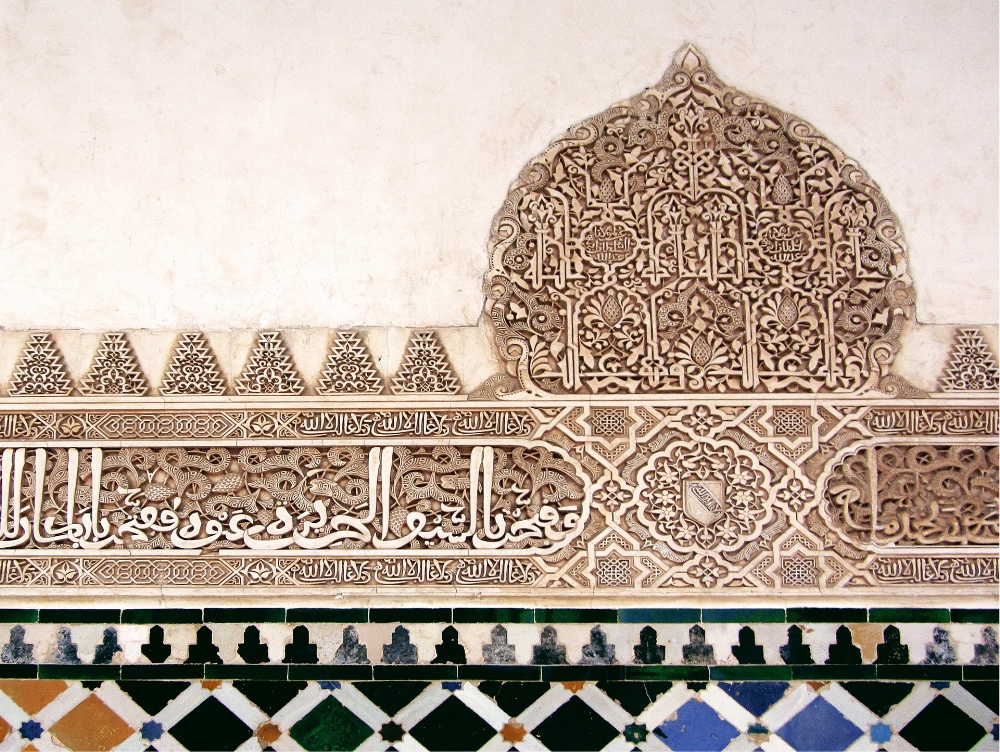 It is considered that the region was at its highest point of cultural splendor when the ruling kingdom was the Caliphate of Córdoba 929–1031. This is when structures such as the Mosque in Córdoba were built and the universities in Spain (especially the one in Córdoba) became celebrated worldwide. Following this rule the kingdom was split into several minor ones with capitals in Zaragoza, Toledo, Sevilla, Málaga, etc. The political ups and downs show insight into the complex historical circumstances that existed at the time and that gave way to a society that blended the cultures of the people living in the region.
It is considered that the region was at its highest point of cultural splendor when the ruling kingdom was the Caliphate of Córdoba 929–1031. This is when structures such as the Mosque in Córdoba were built and the universities in Spain (especially the one in Córdoba) became celebrated worldwide. Following this rule the kingdom was split into several minor ones with capitals in Zaragoza, Toledo, Sevilla, Málaga, etc. The political ups and downs show insight into the complex historical circumstances that existed at the time and that gave way to a society that blended the cultures of the people living in the region.
Eventually, the kingdom of Al-Andalus began to diminish considerably. Towards the end of its reign—beginning in the first half of the 13th century—, it was reduced southern part of Spain. This last reigning kingdom is known as Nasrid (or nazarí) Kingdom comprising the current provinces of Granada, Málaga, and Almería in addition to some parts of Jaén and Cádiz. This final region of Al-Andalus, with its capital in Granada, was allowed to survive longer than others because, despite the political upheaval on either side, it had a fortunate geographical location and was able to make agreements with other ruling kingdoms. However, gradually, the Catholic Monarchs (Isabella and Ferdinand) forced the rulers out of the Peninsula in 1492.
The influence
Perhaps one of the most interesting things about the Islamic rule is that people were still allowed to practice their religions of Judaism and Christianity if they paid the taxes (in relative peace, especially when compared to the Inquisition held by the Catholic Monarchy that followed their period of rule). This allowed for great minds across many cultures to come together in a studious and creative way. Although it was not the main language at the beginning of the kingdom, Arabic soon became a language used by all people in the region. Creativity and scientific studies flourished and the universities in Spain gained importance.
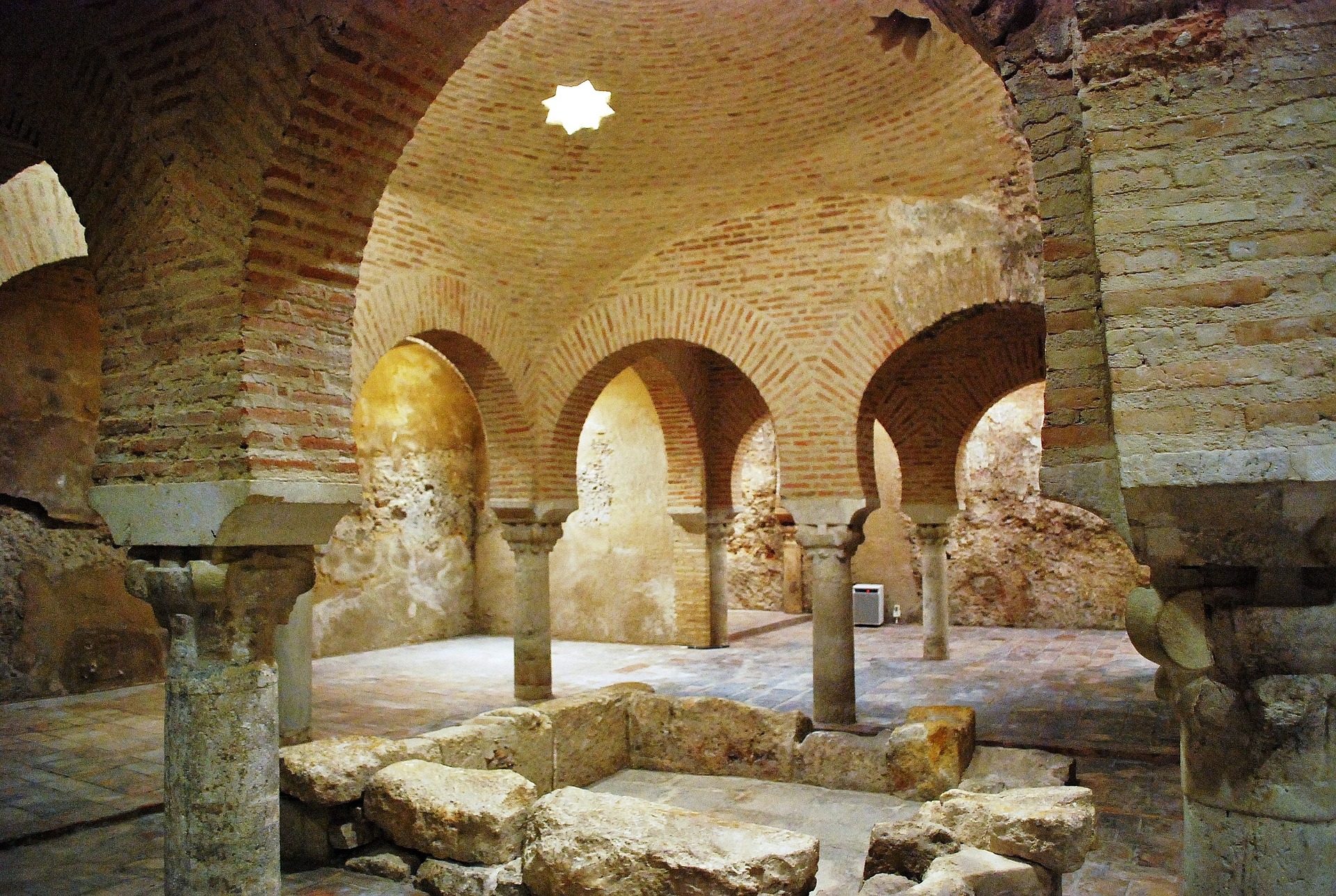 Architecture and common spaces were developed to create room for communities, worship, and cleansing. Beautiful mosques, market places, and mausoleums or cemeteries were built. And public baths became a norm across the region and hygiene conditions improved. May of the ways of building communities are still reflected in cities today (especially in southern cities and mountain towns).
Architecture and common spaces were developed to create room for communities, worship, and cleansing. Beautiful mosques, market places, and mausoleums or cemeteries were built. And public baths became a norm across the region and hygiene conditions improved. May of the ways of building communities are still reflected in cities today (especially in southern cities and mountain towns).
In addition, during the time of Al-Andalus there was a considerable amount of economic development as cities were created as places that revolved around large marketplaces where both local manufactured and agricultural goods were sold. In addition, souks sold foreign goods. The larger cities of Al-Andalus also exported goods to Northern Europe and the rest of the Mediterranean.
Agriculture also evolved during this time as new plants (such as rice, eggplant, artichokes, etc.) were introduced to the region and diversified the local gastronomy. Irrigation systems were made more efficient, allowing for increased productivity of crops in the region. And many of the terracing systems—where mountains are turned into steps to allow more planting—has been traced back to Al-Andalus.
Where you can see this influence today
Spanish itself has been wrapped around the Arabic rule that once existed. We can see the influence in many things, including the language. For example, many of the common words we use today—such as café (coffee) and azúcar (sugar)—can be traced back to Arabic roots. It should be no surprise that these relationships exist, but they have become so ‘normal’ in everyday life that people tie them to the Catholic Spain that followed Al-Andalus.
In addition, you can visually see the influence of the Al-Andalus in many buildings across Spain and Portugal including:
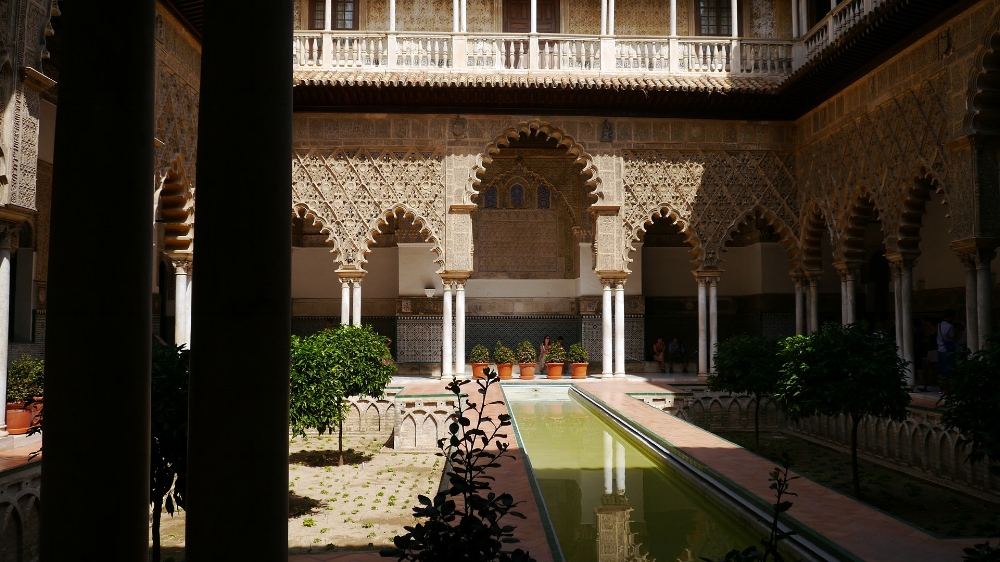 The Mezquita (a cathedral built inside a mosque) and Viana Palace in Córdoba
The Mezquita (a cathedral built inside a mosque) and Viana Palace in Córdoba
The Real Alcázar and the Giralda in Sevilla
The Alhambra and Corral de Carbón in Granada
The Alcazaba in Badajoz
The minaret at the Cathedral in Toledo (that was once a mosque a place where Muslims were called to prayer)
The Castelo dos Mouros in Sintra (near Lisbon, Portugal)
These are just a few ideas of places where you can wander around modern day Spain and see the influence that Muslim Spain had on the people and the places. We don’t always remember how our history defines us, but if you look for the traces, they tend to be there.
For more information, check out this website (in Spanish)




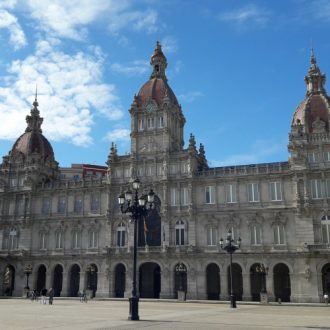
One Comment
brian@lingerhere.org
There is always more to add, but something important is that it was a particular Muslim from the Umayyads who crossed into Spain in 711. The Umayyads were on the run after losing to the Shia. The upshot is that everything Muslim but Spain was controlled by the Shia, and Spain was controlled by the Umayyads, also known as the Sunnis. The leader of the forces crossing from Africa in 711 was Tariq ibn Ziyad. “Mountain of Tariq” is “Jabal Tariq” which got a little mangled and became “Gibraltar.”